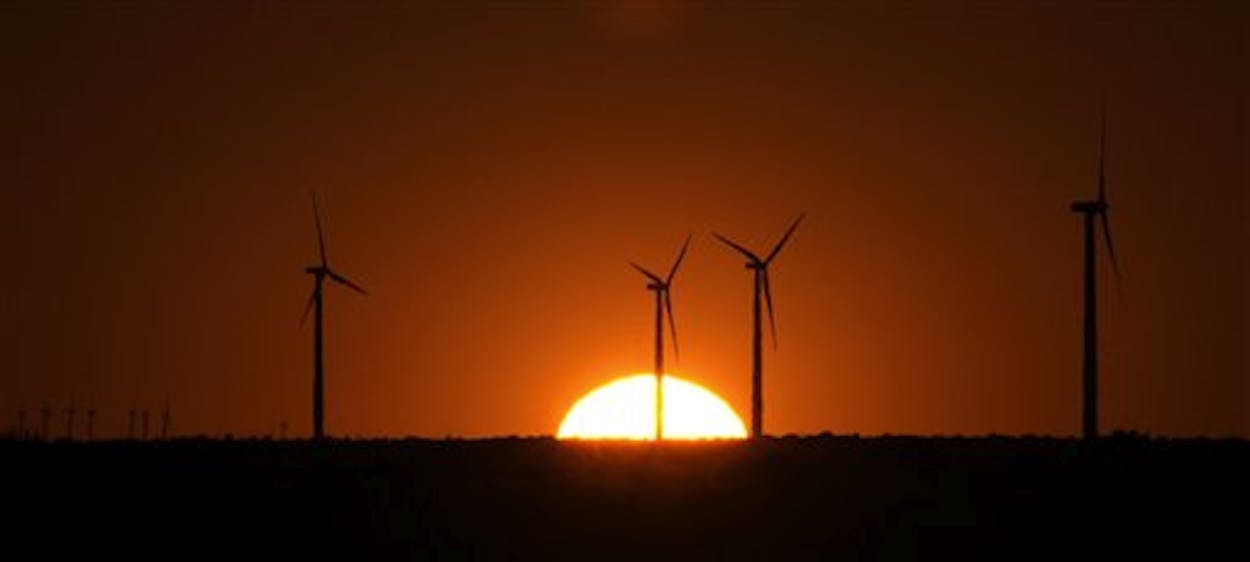Abundant wind, a self-contained electrical grid, and renewable friendly subsidies led Texas to become the national leader in wind energy. Today, when you drive west out Interstate 20, wind turbines have replaced pump jacks as the most prominent manmade feature of the landscape.The amount of installed wind capacity in the state has more than doubled in the last seven years, to 21,450 megawatts today. That’s almost as much wind capacity as there is in Spain, which ranks fifth in the world for wind production.
But proponents of wind energy are worried about future growth in this renewable sector after the U.S. House voted Thursday to approve the Republican tax reform bill, which includes a provision that would retroactively cut the wind energy production tax credit. Critics say these changes, if they make it into law, will chill growth in the industry and derail billions of dollars worth of planned projects.
“The House tax bill, far from being pro-business, would kill over half of new wind farms planned in the U.S. and undermine one of the country’s fastest-growing jobs,” Tom Kiernan, CEO of the American Wind Energy Association, told North American Windpower, a trade publication. But all is not yet lost: the Senate’s version of the bill preserves the tax credits at current levels.
So, what exactly is the renewable energy production tax credit and what does it do? Senator Chuck Grassley, an Iowa Republican, was the original author of the bill creating the credit, which was passed as part of the Energy Policy Act of 1992. The credits have been renewed more than nine times since then, but, under a 2015 plan hammered out by Grassley, were slated to be phased out by 2020.
Here’s how the credit currently works: wind, geothermal, and “closed-loop” biofuel facilities that broke ground in 2015 and 2016 will receive a 2.3-cent per kilowatt hour tax incentive for the first ten years of a renewable plant’s existence. The 2015 phaseout deal was lauded for phasing the credits down in a predictable fashion: projects breaking ground this year receive 80 percent of the credit, while those starting construction in 2018 and 2019 would get 60 percent and 40 percent respectively.
The House plan, as Houston Chronicle columnist Chris Tomlinson put it, “moves the goal posts, cutting the 2.3-cent-per-kilowatt-hour tax credit to 1.5 cents and retroactively changing the definition of ‘under construction.'” Companies like predictability, which is why the changes in the House tax plan are problematic. “It would be a devastating blow,” Michael Rucker, CEO of Colorado-based Scout Clean Energy, told the Dallas Morning News. “By completely changing the tax credit and start of construction guidelines, most of these projects become unfeasible.”
The House-passed tax bill would also deal other blows to the green energy sector, including eliminating the $7,500 electric vehicle tax credit for consumers and targeting the Investment Tax Credit for solar projects, leading The New Republic to dub it “an assault on renewable energy.” The Senate bill, however, was called “decidedly more gentle” to renewables by Greentech Media.
For more on the history of wind power in Texas, revisit this 2011 Texas Monthly feature story by Kate Galbraith and Asher Price, “A Mighty Wind.”
- More About:
- Energy







